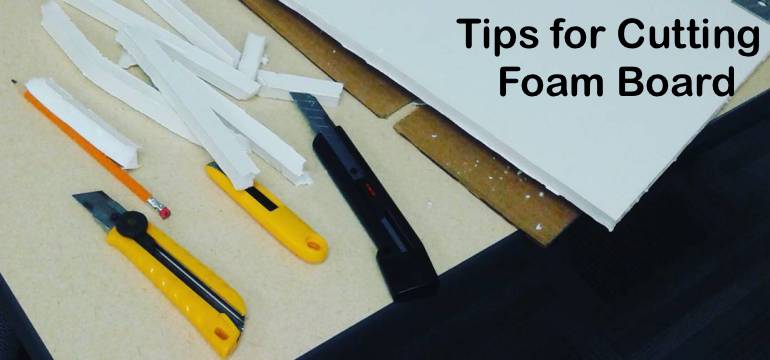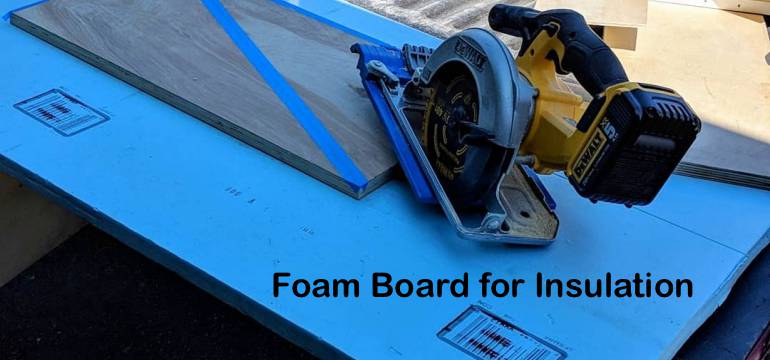Knowing just how to cut foam board and still have the edges look nice can be a tricky thing. Foam boards are frequently used by architects to make models of what they plan on building, to create signs or posters, as a form of insulation, or any number of other things, each of which needs the edges to have a sharp, clean finish.
Foam board can sometimes be referred to as foamcore but, no matter which name you call it by, you might know from experience that the edges love to get jagged when you try to cut it. This is one of the most common problems people experience when cutting foam board.
What do you use to cut foam board?
While you can use anything that has a sharp blade on it to cut foam board, some things naturally work better than others. If you are in a hurry and do not care about the details, you can cut with the first thing you grab.
☆ For example, a pair of kitchen scissors will cut through it if you don’t care about the edges, and even a hand saw can do the work if the board is too large for scissors to handle.
☆ Hot knives and hot wires are fairly popular ways of cutting foam cleanly. The problem with using one of these, besides the melted edges it can leave and the burns it can cause if you are not careful is that it can release the potentially toxic fumes of the foam.
If you use a hot knife or a hot wire, be sure to check the type of foam that you are using to verify that it is safe kind to be cut by these.
☆ A kitchen knife or a pocket knife can work well if it is sharp enough and if you have a grindstone or file to keep them sharp as you cut. These can be a good option and, if going this route, you should pick a knife with a relatively long yet thin blade.
☆ The best option is undoubtedly a utility knife with an X-Acto knife being a close second. The blade of a utility knife is easy to replace at the first sign of dullness, and it can be used for a multitude of other things. If you do a large amount of foam board cutting regularly, you could also consider investing in a foam cutting saw.
Tips for the best way to cut foam board overall

First of all, when trying to determine just how to cut foam board, you must have a nice sharp blade on the knife or whatever you will be using to cut your foam board. A dull blade will make it impossible to cut without getting jagged edges since the tiniest variance in the blade can affect it.
This fact is especially true since it often requires more than one cut over a line to cut entirely through if your blade is dull. You will be able to tell if a knife is genuinely sharp or not when it comes to foam board because a sharp knife can slice through the whole thing in one smooth cut.
Also, whatever you decide to cut with should be held as horizontally as possible. Doing this will allow more of the blade to come into contact with the board and will give you much better results.
Above all, never “saw” at the foam board at all. Keep your movement smooth from top to bottom and try to not vary the depth of your knife at all while you are cutting.
How to cut foam board for insulation

Foam boards that are designed for insulation have a different look to it than a regular sheet of foam board does. For starters, it has one side that has ridges or bumps on one side of it, the other side being flat and smooth like a regular foam board.
Even though this foam is made from the same stuff, the inside is different. It is more solid in the center, which is why it is sometimes referred to as rigid foam insulation.
You should cut this kind of foam board with the ridges on the bottom. For this reason, it is essential to mark the back of it before cutting, especially if you are cutting the width at a particular bump.
As before, the best way to cut foam board involves cutting at as much of an angle as possible, and you should also avoid sawing at the foam board. You should also use an extra-long blade for this. Doing so will make sure that the knife can reach all the way through at the angle you are cutting at with length to spare.
- Using Borax in the Dishwasher - May 27, 2020
- Towel Ring Height and Other Fixtures: Proper Measurements - May 1, 2020
- Homemade Paint Removers for Every Surface - April 27, 2020
